|
From the book, "Santo Tomas" by Frederic Stevens: Gene Thiele (husband) and his wife Dorothy Day Thiele December 3, 2007 This inquiry was made through my family member Bob McWilliam, "member of 5th Field Hospital" ---upon further discussion, it was determined that the persons in question were GENE & DOROTHY THIELE. After the liberation of STIC, this couple operated a coffee and sandwich stand around the clock (from provisions provided by the U.S. Army) to any and all personnel at STIC. It was during this period that they befriended Bob McWilliam. They told him of their history of sending their daughter back to the U.S. on one of the last ships to leave Manila. After they returned to California, the attached photograph was taken with their daughter and mailed back to Manila sometime prior to McWilliam's departure on December 13, 1945. 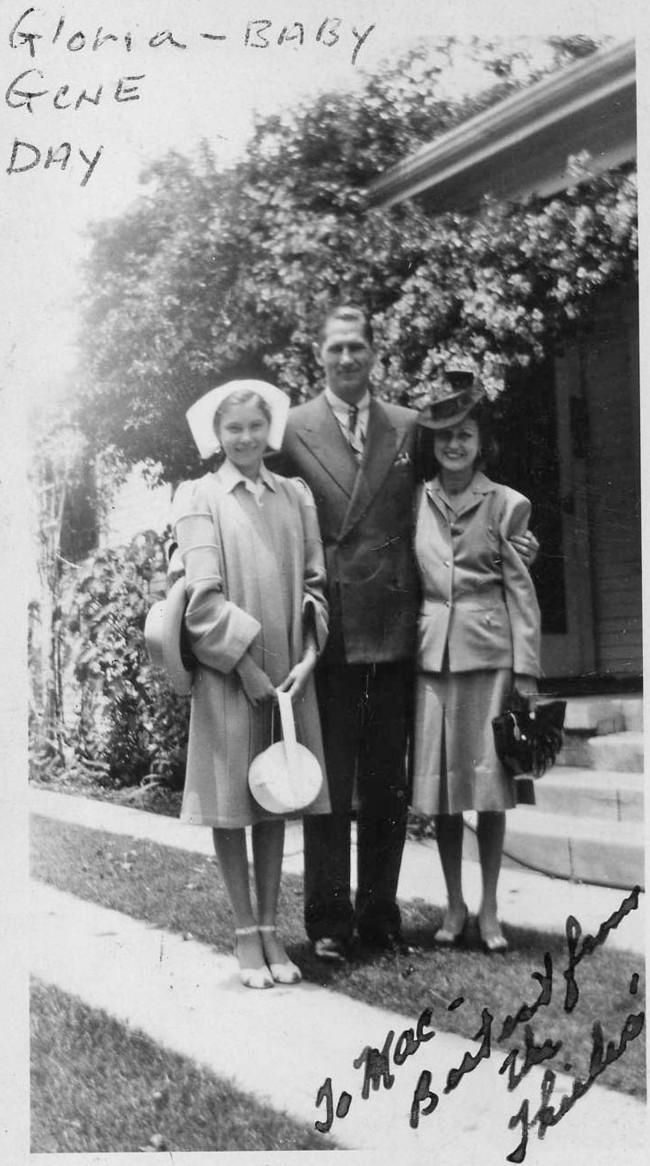 I have additional information about the Thiele family through searches on the internet that I can send in the next email. My search indicates that both Gene and Dorothy are deceased. It is possible that the daughter Gloria may still be living. Do you have other information that you could share, so I could pass to Bob McWilliam? Gary L. Epple E-mail GaryLEpple2253@aol.com December 19, 2007 Gloria has been found. She told me that she was never in the Philippines. She will write some about her parents to go on this page, but until then she provided the story she wrote about Manila' Rescue from the horrors of Auschwitz sixty years ago was commemorated at the end of January. Civilian prisoners of the Japanese had obtained their freedom in the Philippines soon after. The battle for Manila lasted one month, February 3 to March 3, 1945. The Holocaust remains the most monstrous crime of the 20th century; but atrocities occurred on the other side of the world which are only briefly mentioned, if at all. Among younger generations they are unknown. Several thousand civilians were prisoners in Santo Tomas (University) Internment Camp. Some were brutally killed while interned. As the war grew worse for the Japanese they accelerated a campaign of deliberate starvation. Pleas by parents for food to sustain the children in camp had been ignored for months. In October, 1944, American forces landed on Leyte Island. Already scant rations were summarily reduced to 1 ˝ cups of wormy rice per day for adults and 5 ounces for children under 10. Milk for babies was stopped. By January, 1945, the ration was ˝ cup for adults. The prisoners scraped a native root and picked hibiscus leaves to make a thin soup. Doctors were punished for listing starvation as cause of death. My 5’2” mother weighed 72 pounds when liberated, and my father, 6”3 ˝”, weighed 135. We need to remember also, that Japanese troops killed 100,000 citizens, mostly Filipinos, during the month-long resistance. The American First Cavalry had raced through Manila to free the internees, knowing they would be killed first. During the battle for the city, sixteen thousand Japanese troops refused to surrender. They herded people into churches, hospitals and houses and set the buildings afire. Those who fled were shot, bayoneted or beheaded - men, women, children, babies. Meanwhile, military and civilian prisoners were being freed from other camps. Cabanatuan, Bilibid and Los Banos added their recitation of atrocities. Besides slave labor, other specific issues of human rights violations include inhumane medical and bacteriological experiments, starvation, withholding Red Cross care packages, mayhem and rape. Japan was finally forced to admit its crimes against the Korean comfort women and for the rape of Nanking; but that country has sanitized its history books covering the period. Young Japanese today know nothing of Pearl Harbor or of the barbarous treatment afforded prisoners of war. Germany has tried to atone, accepts its culpability and teaches students that WWII was an evil period in its history. Japanese behavior was spawned by culture. Schoolboys were taught to honor the knights of bushido and the samurai code. To surrender meant dishonor, not only for a soldier, but for his whole family. Death was the heroic alternative. Even common soldiers had no respect for an inferior race, as they judged the Caucasians who surrendered at Correigidor. They were deemed unfit to live. The suicides and fights to the death on far Pacific islands presented an unexpected study of the Japanese psyche. Kamikaze suicide missions provided emphasis. Young teens learned in simulators how to take off, keep a plane in the air and aim it at a ship. They didn’t practice landings. They would die gloriously for their god-emperor. Such fanaticism influenced the decision to drop the atomic bomb. In March, 1945, Tokyo had been firebombed. Sixteen square miles were leveled, eighty-three thousand were killed and a million made homeless. This was eight months before 80,000 were killed in Hiroshima. (Over time the figures keep inflating). The militarists prepared to sacrifice as much of Japan’s population as necessary. A million men at arms remained in the home islands. Neither did the second atomic bomb over Nagasaki bring immediate submission. Unrelenting raids by B-29s in the days following clinched it. The military was threatening to depose Emperor Hirohito when he made an unprecedented radio address to his people, announcing unconditional surrender. Of almost 14,000 civilian internees from several nations, less than 3000 were alive in 1999. About 9000 remained of 33,600 military personnel. Survivors have, for years, sought reparations and a formal apology from Japan. That nation still denies its history. The 1951 Treaty of San Francisco freed war criminals not yet tried and absolved Japan. We needed bases there for the Korean Conflict. In the year 2000, a federal judge ruled that the peace agreement bars former prisoners of the Japanese from seeking redress. Soon there will be no survivors to make claims. Our country will feel eternal guilt for Hiroshima and U.S. relocation camps without accusing whispers from those forgotten voices echoing in its collective ear. Gloria Thiele glowsquirrel@sbcglobal.net 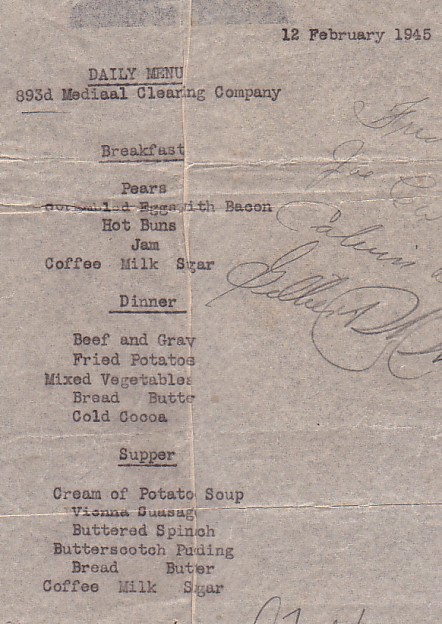 Meals after liberation  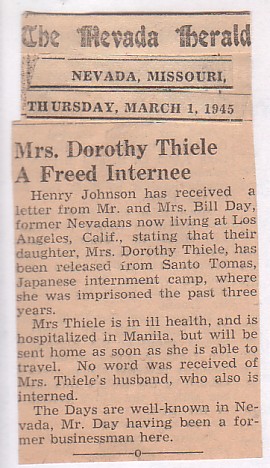 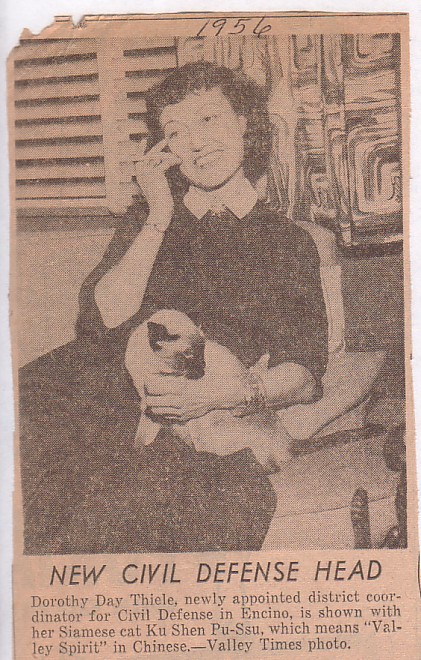 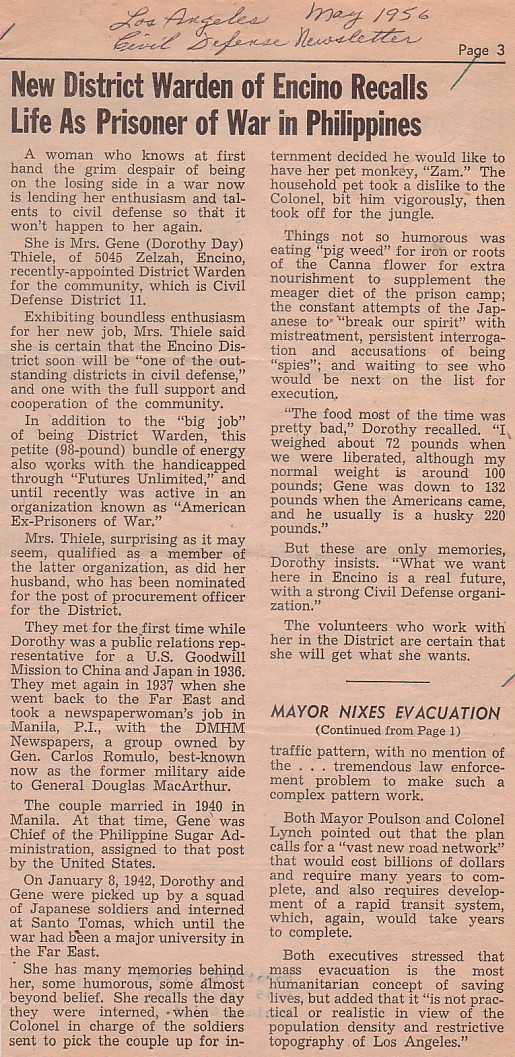 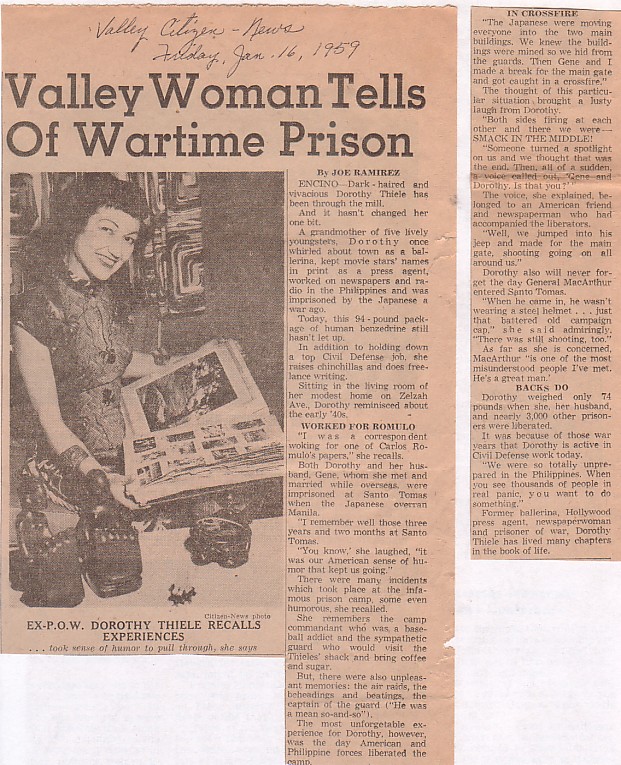 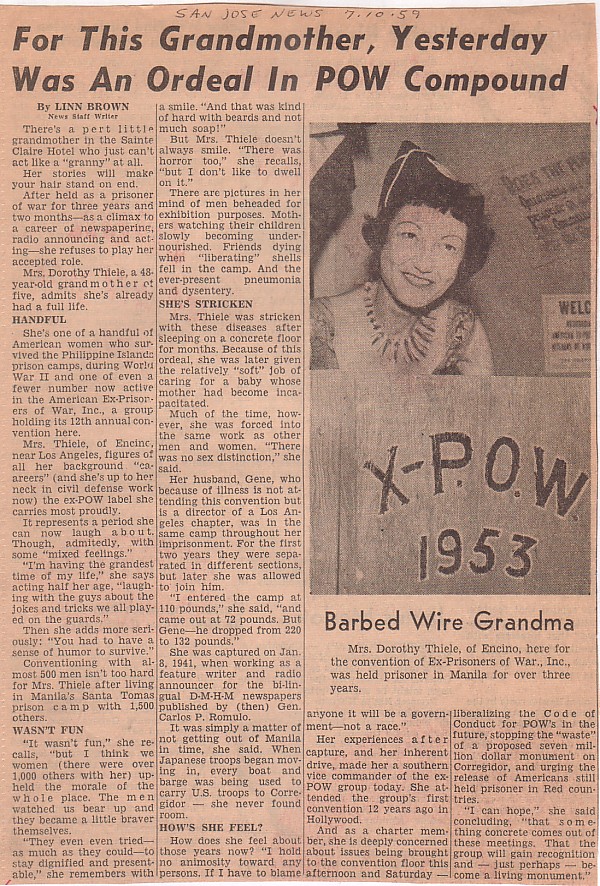 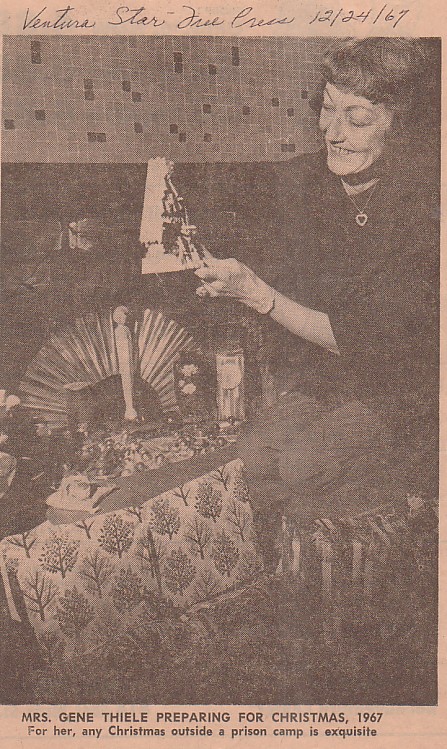 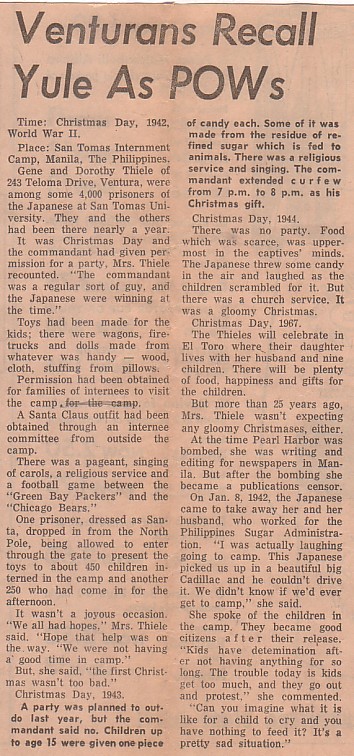 From the Sacramento Union 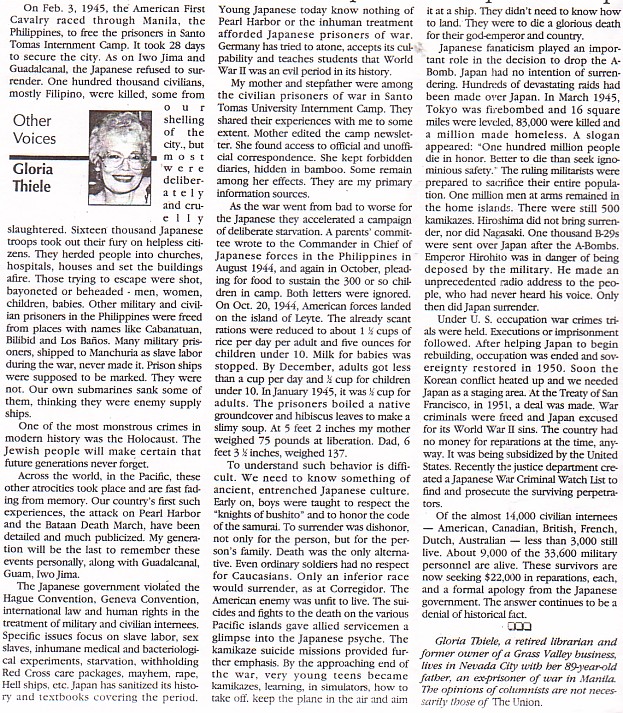  or would like to be added to my POW/Internee e-mail distribution list, please let me, Tom Moore, know. Thanks! |